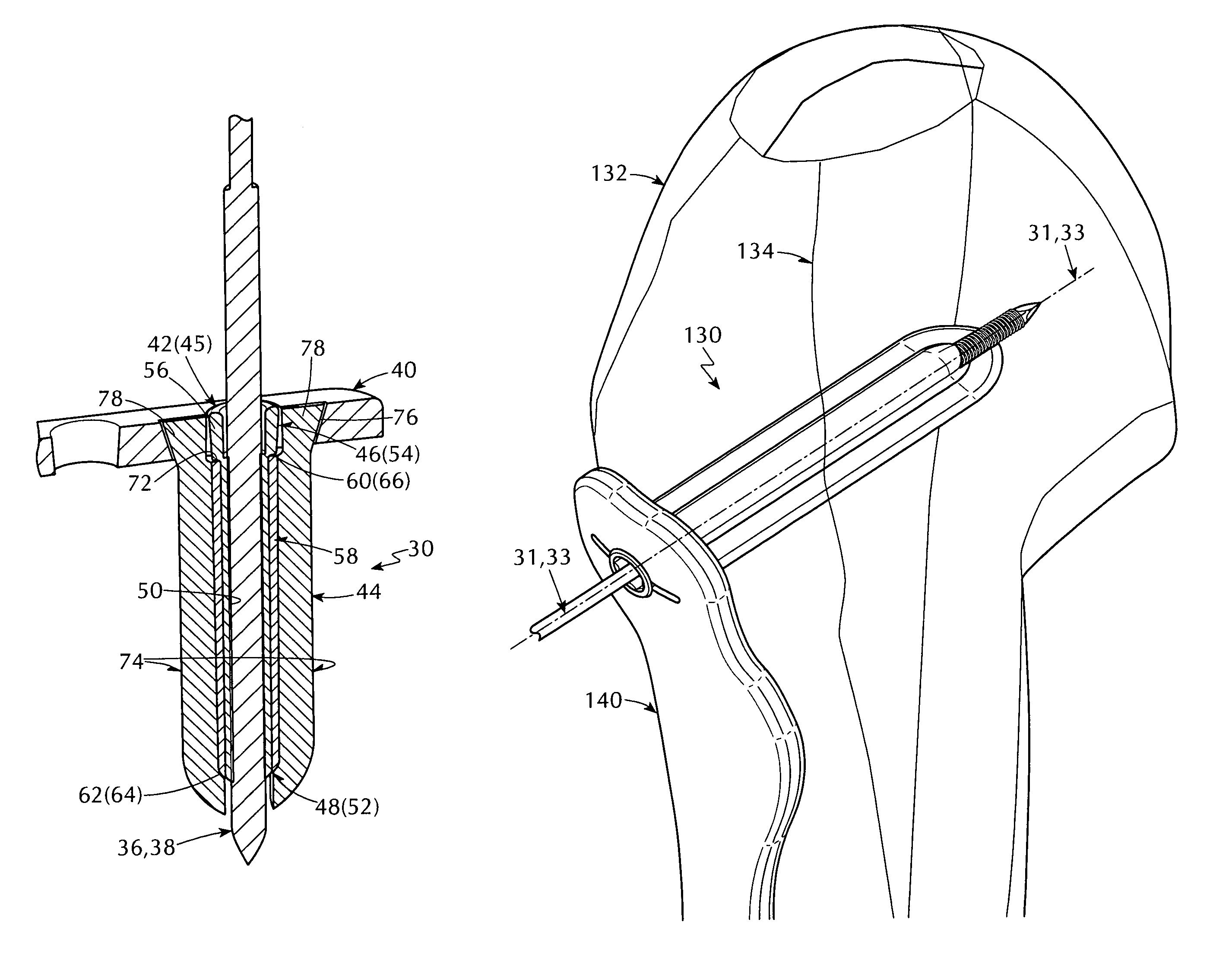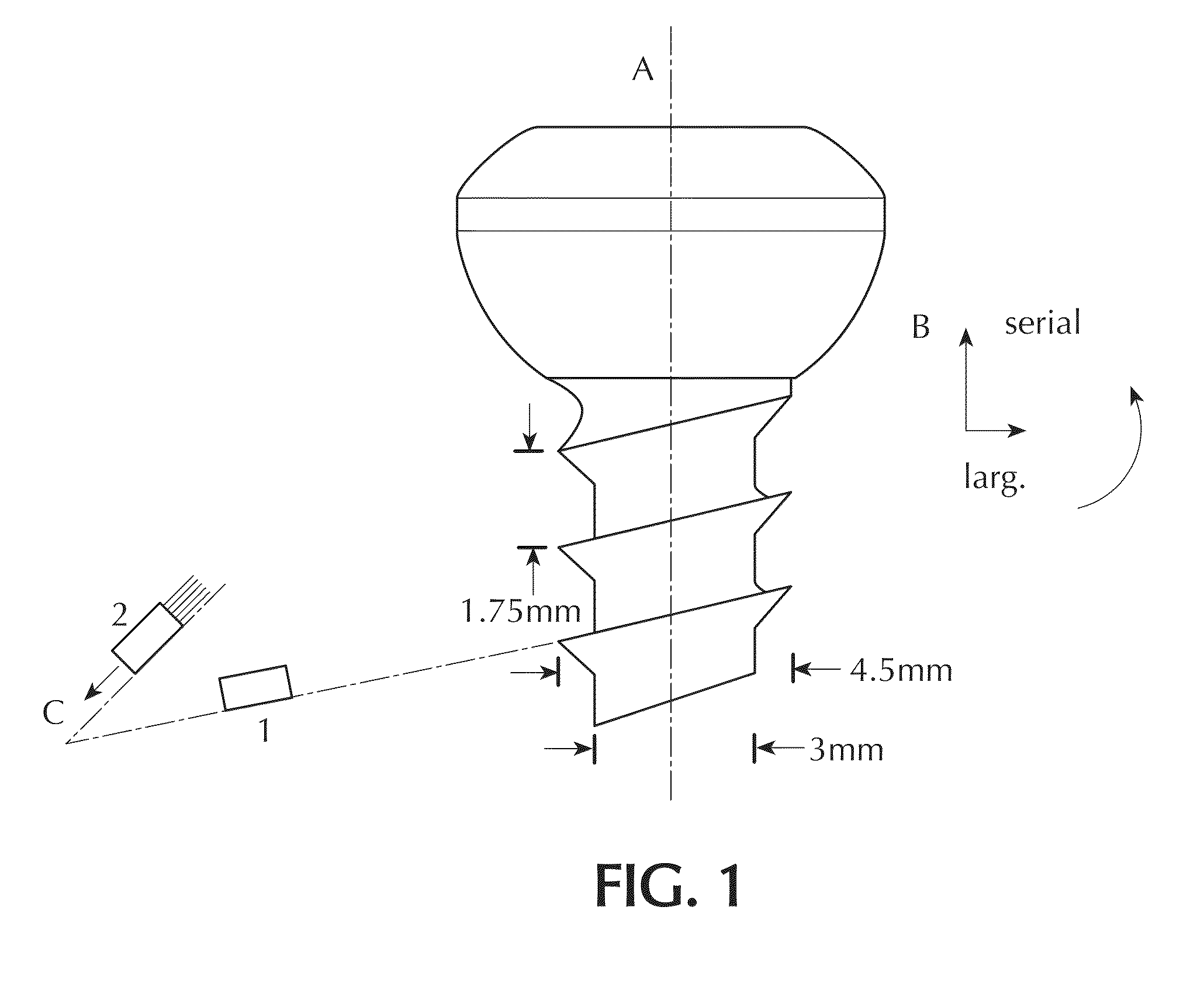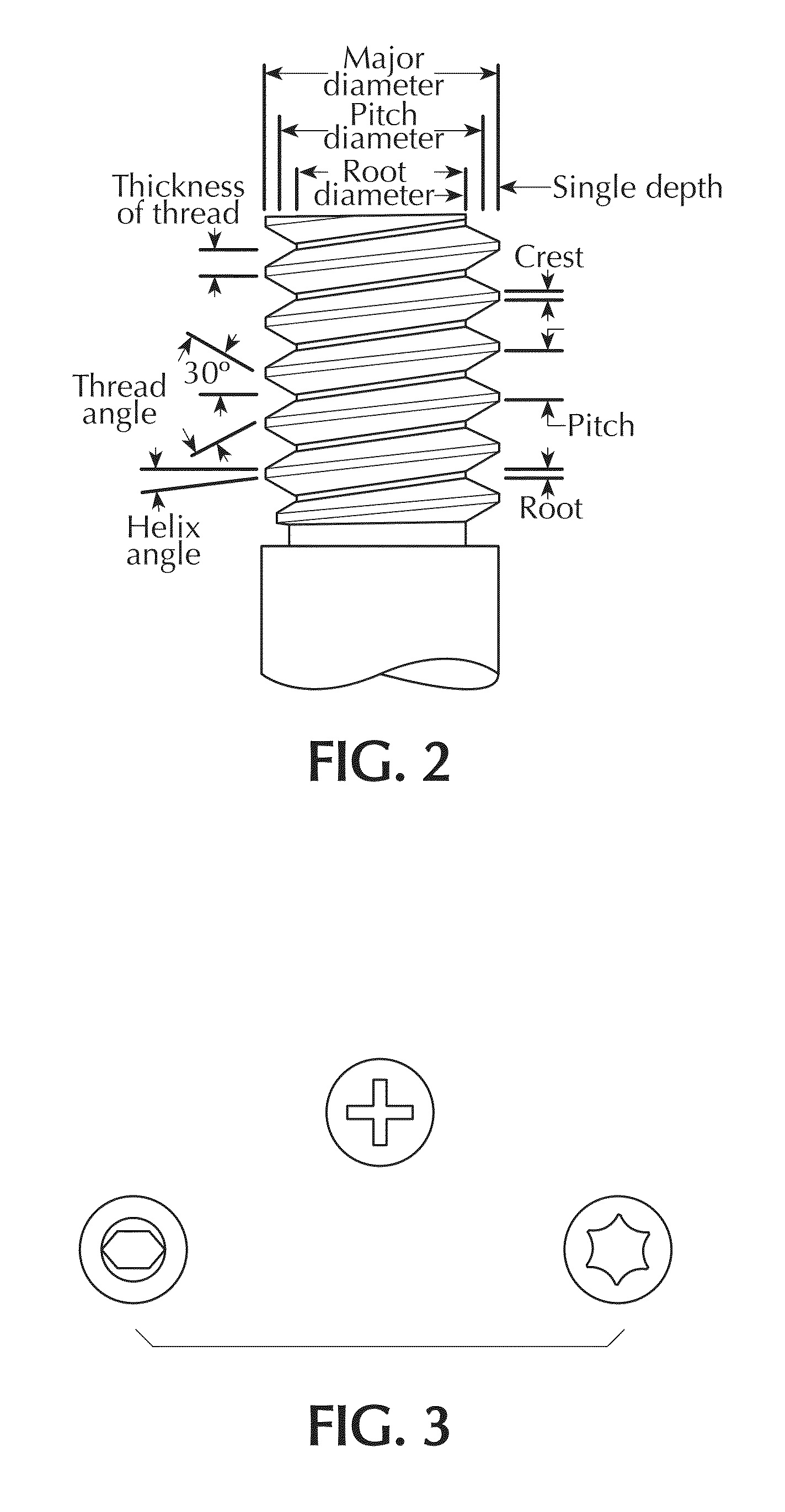Interchangeable orthopedic blade
a blade and interchangeable technology, applied in the field of orthopaedic blades, can solve the problems of limited understanding of biology and mechanics, complicated early surgical fixation, and inability to treat open fractures and ballistic wounds with long bone fractures to achieve the effect of stable anatomic restoration, stable fixation and more accurately pla
- Summary
- Abstract
- Description
- Claims
- Application Information
AI Technical Summary
Benefits of technology
Problems solved by technology
Method used
Image
Examples
first embodiment
[0194]Referring now to FIG. 23, which is a diagrammatic perspective view of the first embodiment of the interchangeable orthopedic blade of the embodiments of the present invention more accurately placing in, without excessive damage to, a bone when repairing a fracture in the bone by cooperating with either a pre-installed K-wire or a pre-installed screw, so as to provide absolute stable fixation by holding the fracture in its anatomic position and resist applied forces while healing, to thereby provide a stable anatomic restoration and eliminate a need for revision surgery due to failure of fixation or malunion, and for further cooperating with an applicable interchangeable plate when an applicable interchangeable plate is used, the interchangeable orthopedic blade of the embodiments of the present invention is shown generally at 30 for more accurately placing in, without excessive damage to, a bone 32 when repairing a fracture 34 in the bone 32 by cooperating with either a pre-in...
second embodiment
[0215]Referring now to FIG. 30, which is a diagrammatic perspective view of the second embodiment of the interchangeable orthopedic blade of the embodiments of the present invention more accurately placing in, without excessive damage to, a bone when repairing a fracture in the bone so as to provide absolute stable fixation by holding the fracture in its anatomic position and resist applied forces while healing, to thereby provide a stable anatomic restoration and eliminate a need for revision surgery due to failure of fixation or malunion, and for further cooperating with an applicable interchangeable plate when an applicable interchangeable plate is used, the interchangeable orthopedic blade of the embodiments of the present invention is shown generally at 130 for more accurately placing in, without excessive damage to, a bone 132 when repairing a fracture 134 in the bone 132 so as to provide absolute stable fixation by holding the fracture 134 in its anatomic position and resist ...
PUM
 Login to View More
Login to View More Abstract
Description
Claims
Application Information
 Login to View More
Login to View More - R&D
- Intellectual Property
- Life Sciences
- Materials
- Tech Scout
- Unparalleled Data Quality
- Higher Quality Content
- 60% Fewer Hallucinations
Browse by: Latest US Patents, China's latest patents, Technical Efficacy Thesaurus, Application Domain, Technology Topic, Popular Technical Reports.
© 2025 PatSnap. All rights reserved.Legal|Privacy policy|Modern Slavery Act Transparency Statement|Sitemap|About US| Contact US: help@patsnap.com



